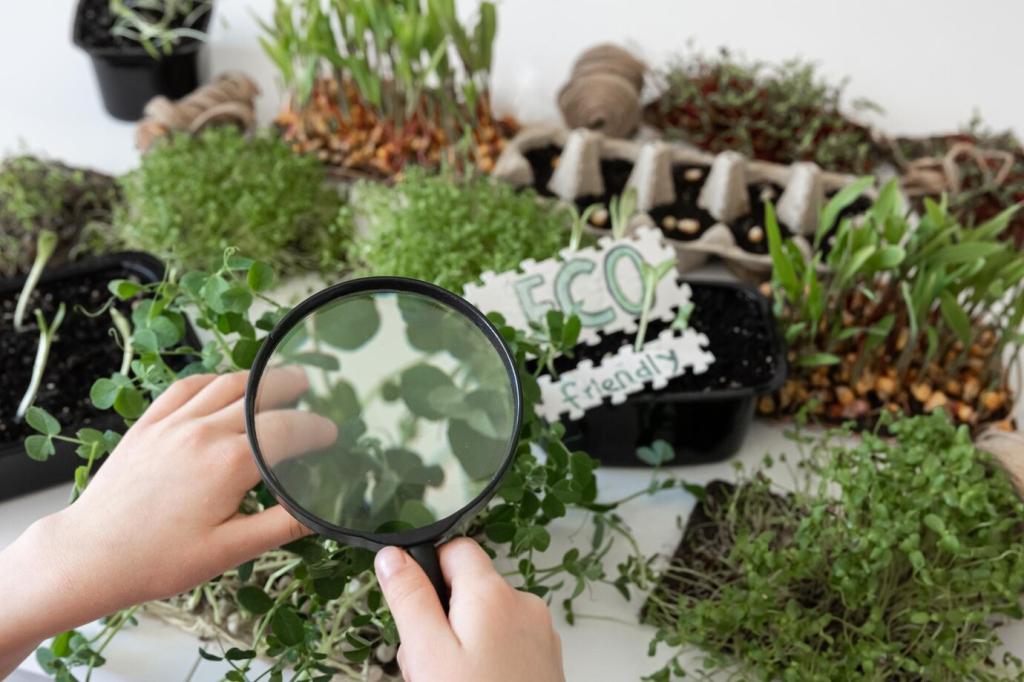In-Depth Chats with Food Bloggers on Garden Harvests
Today’s chosen theme: In-Depth Chats with Food Bloggers on Garden Harvests. Step into candid interviews where soil-stained stories become recipes, family rituals, and generous community tips. Subscribe, comment, and tell us which gardeners and bloggers to interview next.


A Morning Among Tomato Vines
At 6 a.m., Lina walked us through dew-bright rows, teaching how fragrance signals ripeness. She swears tomatoes hum with sweetness when picked just after sunrise, before heat chases away that delicate garden perfume.
Questions That Grow Into Stories
Open-ended questions about first gardens, seed swaps, and failed crops unlock candid, practical wisdom. Bloggers reminisce about soggy springs, miraculous Octobers, and the mistakes that shaped their most reliable harvest habits.
Join the Dialogue
Share your harvest questions, from trellising beans to saving basil from bolting. Comment with your toughest garden dilemma, and we’ll ask our next guest to answer it on record—no fluff, just field-tested insight.
Zucchini That Refused to Quit
When Maya’s vines exploded, she interviewed neighbors for strategies, then created crisp fritters with mint stems and lemon zest. Her takeaway: treat abundance as a creative constraint, not a burden you apologize for.
The Beet Pesto Episode
Jamal confessed to hating beet greens—until a farmer suggested blitzing them with walnuts, garlic, and citrus. The pesto became a signature pasta topper, and a deeply colored drizzle for smoky grilled carrots.
Share Your Garden-to-Table Move
What harvest-driven dish anchors your weeknights? Drop your go-to method—sheet-pan suppers, raw salads, or blistered peppers—and we’ll feature the most inventive approaches in our next interview roundup.
Skillful Harvesting: Techniques Bloggers Swear By
01
Timing Is Flavor
Multiple bloggers pick leafy greens at dawn to keep sugars high and wilting low, while tomatoes wait until late morning for fewer dew-borne diseases. They note basil tastes best before flowers appear—pinch early, pinch often.
02
Gentle Hands, Sharp Tools
A sharp harvest knife reduces bruising, and soft bags prevent crushing. Several guests prefer pruners for peppers and eggplants, preserving stems to slow moisture loss and extend counter life without refrigeration.
03
Tell Us Your Trick
Do you harvest herbs into damp towels or cool them in the sink first? Tell us your quiet technique. We’ll test standout tips and report results, crediting you in future interviews and newsletters.
Preserving the Bounty Without Losing the Soul
Ferments with a Family History
Ana learned kraut salting by palm measures from her grandmother. She now weighs everything, but still taps jars to hear bubbles. That small ritual keeps heritage alive while ensuring consistent, tangy, crunchy results.
Freezer Tetris and Label Honesty
Bloggers label with date, variety, and future use—“Roma, sauce” versus “Cherry, pizza burst.” Transparent goals prevent forgotten bags and wasted effort, transforming freezers into curated pantries rather than chaotic frosty archives.
Your Preservation Win
What saved your bumper crop—dehydrated tomatoes, chili crisp, herb salts? Share your process and a photo. We’ll discuss technique trade-offs with experts and publish a preservation playbook inspired by reader experiments.

Daniela keeps pole-bean seeds descended from a village market. Each season, three pods are saved for continuity. The taste is tender, yes, but the story seasons the pot as surely as salt.

Sumac on cucumbers, dill on potatoes, ají on tomatoes—bloggers describe how herbs knit memories to meals. Garden harvests become translators, speaking comfort in familiar accents only the table can hear.

Which seed or spice tells your family story? Share its path, a planting tip, and one dish you always cook with it. We’ll weave reader histories into upcoming interviews about living culinary lineages.
